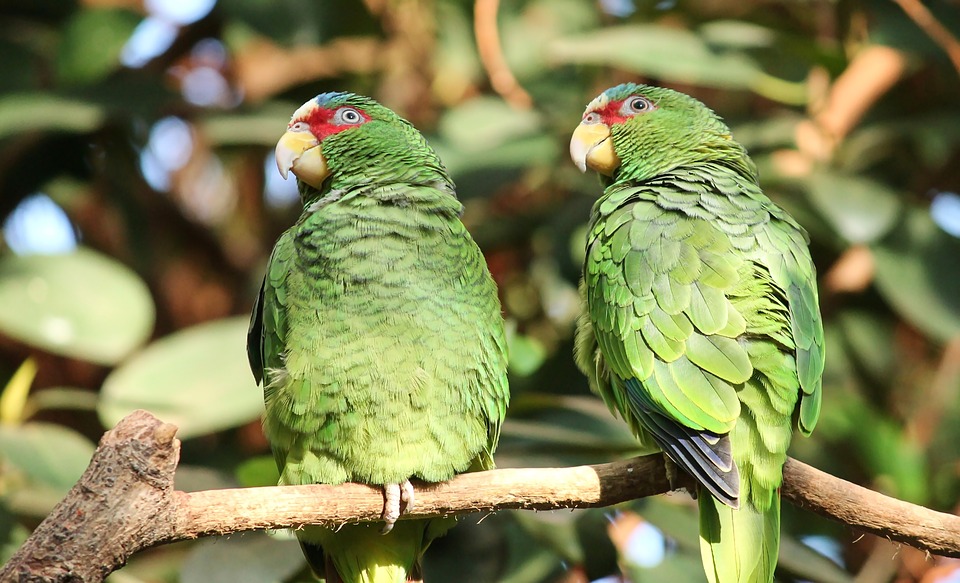**Header: How to Discourage Parrots from Engaging in Aggressive Behaviors Towards Other Parrots**
Introduction
Parrots, known for their intelligence and social nature, sometimes exhibit aggressive behaviors towards other parrots. Aggression can lead to serious injuries and stress among these beautiful birds. As a responsible parrot owner, it is crucial to understand the underlying causes of aggression and take proactive measures to discourage such behaviors. In this article, we will explore effective methods to promote harmony among parrots and provide insights into common concerns in parrot training.
Understanding the Causes of Aggression
Parrots, like humans, have individual personalities and can exhibit aggression for various reasons. Identifying the root cause of aggression is essential to address the problem effectively. Some common causes include:
1. Territorial Disputes: Parrots can become aggressive when they feel their territory is being invaded by another bird. This behavior is often observed when introducing a new parrot to an existing flock.
2. Jealousy or Competition: Parrots, being highly social creatures, can develop jealousy or competitiveness towards other birds when resources such as attention, food, or toys are involved.
3. Fear or Insecurity: Parrots may display aggression as a defense mechanism when they feel threatened or insecure in their surroundings.
4. Mating Season: During the breeding season, parrots may exhibit aggressive behaviors as they become territorial and protective of their nests or mates.
Effective Strategies to Discourage Aggressive Behaviors
1. Proper Socialization: Introduce parrots to each other gradually, allowing them to get accustomed to each other’s presence. Supervised play sessions can help them establish positive associations and reduce the likelihood of aggression.
2. Provide Sufficient Space: Ensure that each parrot has enough space to establish their territories within the aviary or cage. Squeezing too many birds into a limited space can lead to increased aggression due to competition.
3. Resource Management: Avoid situations that trigger jealousy or competition. Provide separate feeding stations, toys, and attention time to avoid conflicts over resources.
4. Positive Reinforcement Training: Utilize positive reinforcement techniques to reward good behavior and discourage aggression. Reward parrots for calm interactions and gentle play, redirecting their attention away from aggressive behaviors.
5. Environmental Enrichment: Enrich the parrots’ environment with toys, puzzles, and foraging activities to keep them mentally stimulated and engaged. Boredom can contribute to aggressive behaviors.
6. Identify Individual Triggers: Observe and identify specific triggers that lead to aggression in your parrots. This could be certain sounds, objects, or interactions. Once identified, avoid or manage those triggers to minimize aggressive responses.
FAQs (Frequently Asked Questions)
Q1: Can neutering or spaying parrots reduce aggression?
A1: Neutering or spaying parrots is not a common practice and is generally avoided. While it may have some impact on hormonal aggression, it is essential to consult with an avian veterinarian before considering such procedures.
Q2: How long does it take to see improvements in aggressive parrot behavior?
A2: The timeline for behavioral changes varies depending on the individual parrot and the effectiveness of training techniques. Patience, consistency, and positive reinforcement are key. It may take weeks or even months to observe significant improvements.
Q3: Is it advisable to punish aggressive behavior in parrots?
A3: Punishment is not recommended when dealing with aggressive parrot behavior. It can lead to increased fear, stress, and potentially worsen aggression. Focus on positive reinforcement and redirection instead.
Q4: Can professional help be sought for aggressive parrot behavior?
A4: Yes, seeking professional help from an avian behaviorist or an experienced parrot trainer can be beneficial. They can assess the situation, provide tailored advice, and guide you through specific training techniques to address aggression effectively.
Conclusion
Discouraging aggressive behaviors in parrots requires patience, understanding, and consistent training. By addressing the underlying causes, providing a suitable environment, and utilizing positive reinforcement techniques, you can promote harmony and create a peaceful and happy parrot flock. Remember, every parrot is unique, and it may take time to see improvements. Seek professional help if needed, and always prioritize the well-being and safety of your feathered companions.









